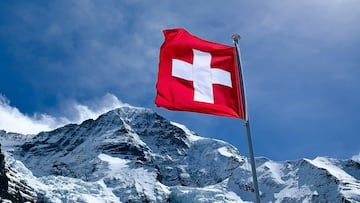The worrying reason why the border between Italy and Switzerland is changing
Not for the first time, nor for the last, the line separating the two countries established in 1861 will be subject to changes.

Borders between countries are something that, despite the passage of time, typically remain as they were at a given time nowadays. Except in the case of offensive actions by one country against the other, the line that delimits one country from its neighbor. But not only a hostile action can make this dividing line move, but climatic conditions can also make it necessary to redefine it.
This is the case of the dividing line that separates Italy and Switzerland, both countries in the Schengen area and that share a 359-mile border, whose creation dates back to 1861. But now, almost a century and a half later, this is about to change. Because part of their border crosses the Swiss Alps, and due to the melting of the glaciers, they will now have to redefine the border.
A “minor correction” of a section of the border running through the Alps is set to take place, the Swiss federal government announced. Part of the affected area lies below the Matternhorn peak (also known as Monte Cervino), one of the highest mountains in Europe (14,692 feet) and which runs through the Swiss region of Valais and the Aosta Valley in Italy, with ski resorts on both sides of the border.
For the moment, the Swiss side has already given its approval to the change, after approving an agreement that would entail the modification of the current border map. This convention will also have to be signed by the Italian side for the change to be made. “In the high mountains, large sections of the Italian-Swiss border are determined by the watershed represented by the crest line of glaciers, snow fields and eternal snow. As the glaciers melt, these natural elements change and redefine the national border,” the Swiss authorities point out.
The agreement, once signed, will mean that both countries will determine which natural areas each are responsible for maintaining. However, Swiss authorities have confirmed that details of the agreement regarding border changes will not be made public until Italy has also given its consent.
This will not be the first time in history that Switzerland has had to redefine its borders for natural reasons. In 2000, the borders in Zermatt were changed after a glacier shifted by 330 to 490 feet. This meant that a chairlift station that had previously been part of Italy now belongs to Switzerland. This could happen more frequently, as that border between the two countries is about 25 miles long and covered by glaciers.
Swiss glaciers melted at an above-average rate in 2024 as a blistering hot summer thawed through abundant snowfall, monitoring body GLAMOS says https://t.co/O1MGHCKT8a pic.twitter.com/mTySjOlL0R
— Reuters (@Reuters) October 1, 2024
Thawing on the rise
Glaciers in the alpine nation are losing a large part of their volume over time. According to the Swiss Academy of Natural Sciences, last year alone Switzerland’s Alpine glaciers lost around 4% of their volume, the second largest loss in their history (behind 2022, with 6%).
Related stories
The country fears that climate change could lead to the loss of up to 90% of its glaciers by the end of the century. Although Switzerland had more than 4,000 glaciers 100 years ago, a quarter of them have already completely disappeared.
Switzerland isn’t the only country suffering the loss of its glaciers. Alaska, Greenland and the Southern Andes in South America are experiencing significant shrinking of their glaciers at rapid rates. Slovenia and Venezuela are the first two countries to have lost their glaciers completely.


Complete your personal details to comment